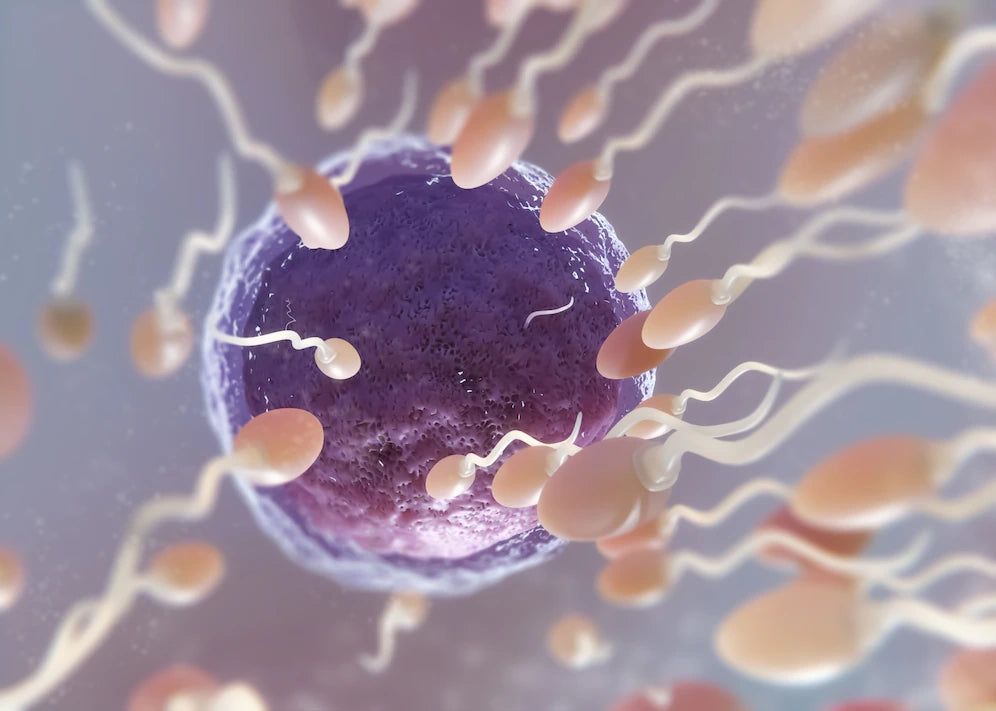
How are vitamin D and fertility-related? To begin, vitamin D receptors (VDRs) and vitamin D metabolic enzymes are present in the reproductive tissues of both men and women.
Read: See These 7 Benefits of Vitamin E for Fertility
Vitamin D, also known as the vitamin of sunlight, the body produces in response to sunlight. It can also be consumed through different foods and supplements.
Recently, studies have shown that vitamin D levels are strongly linked to the fertility of men and women and the chances of a person getting pregnant.
This article will review how vitamin D impacts fertility and how low levels of vitamin D or vitamin D deficiency can lower the likelihood of fertilization.
Quick Facts
- People are considered at risk of vitamin D deficiency if their serum concentration of 25(OH)D is less than 30 nmol/L.
- About 40% of the U.S. population is considered vitamin D deficient.
- Many studies have shown that vitamin D levels are associated with female fertility and healthy pregnancy outcomes.
- Supplementing vitamin D has improved women's fertility and pregnancy outcomes.
- Studies have shown that vitamin D levels correlate with sperm production and motility.
What is Vitamin D?
Vitamin D has many positive biological effects on the body, including reducing inflammation, stimulating the immune system, and improving the absorption of nutrients, and is associated with positive measurements and reproductive results.
What are Normal Vitamin D Levels?
The researchers disagreed on "normal" or "standard" vitamin D levels. However, they have established a range between vitamin D deficiency and adequacy.
A person's risk of vitamin D deficiency increases if their serum 25(OH)D concentration is less than 30 nmol/L. For most persons, concentrations of 50 nmol/L or above are sufficient. The most precise method for determining vitamin D levels is a blood sample-based 25-hydroxy vitamin D test.
Research shows that up to 42% of the U.S. population is deficient in vitamin D.
Refer to the chart below to see how different serum concentration levels of 25-hydroxyvitamin D [25(OH)D] relate to your health as provided by The National Institutes of Health.
|
nmol/L |
ng/mL |
Health status |
|
<30 |
<12 |
Associated with vitamin D deficiency |
|
30 – <50 |
12 – <20 |
Considered inadequate for overall health |
|
50 |
20 |
Considered sufficient for overall health |
|
>125 |
>50 |
Related to potential side effects |
During the initial fertility examination, a woman's vitamin D level is usually checked. Vitamin D tests are a basic part of a woman's fertility test. Men can also undergo a vitamin D test anytime they complete a blood test.
Daily Intake Recommendations
Officially recommended daily intake rates for vitamin D are relatively consistent across all genders, ages, and pregnancy statuses.
Research shows that many doctors recommend that women who are trying to get pregnant, are pregnant, or are breastfeeding should take higher levels of vitamin D (between 50-100 mcg daily).
This is largely due to the fact that vitamin D levels have been shown to be positively related to many measures of fertility and pregnancy. Almost 40% of the population is deficient and it takes time to recover vitamin D stores.
Similarly, women who are breastfeeding can also increase their vitamin D because the newborn's vitamin D level is highly dependent on the vitamin D status of the mother.
Other factors can also influence the recommended daily intake and levels of vitamin D, such as their geographical location, which can determine sun exposure.
See the image below to see the recommended dietary allowances for vitamin D as published by the National Institutes of Health.
|
Age |
Man |
Woman |
Pregnancy |
Lactation |
|
0-12 months |
10 mcg (400 IU) |
10 mcg (400 IU) |
|
|
|
1-13 years |
15 mcg (500 IU) |
15 mcg (500 IU) |
|
|
|
14-19 years |
15 mcg (500 IU) |
15 mcg (500 IU) |
15 mcg (500 IU) |
15 mcg (500 IU) |
|
19-50 years |
15 mcg (500 IU) |
15 mcg (500 IU) |
15 mcg (500 IU) |
15 mcg (500 IU) |
|
51-70 years |
15 mcg (500 IU) |
15 mcg (500 IU) |
|
|
|
>70 years |
20 mcg (800 IU) |
20 mcg (800 IU) |
|
As mentioned earlier, this recommended dietary allowance for vitamin D can be achieved by consuming certain foods or taking vitamin D supplements. Keep reading this article for more information about foods and supplements. But for now, let's dive into how vitamin D and fertility are related!
How Low Vitamin D Affects Female Fertility
Female Fertility
Vitamin D levels are positively correlated with many aspects of women's fertility and pregnancy outcomes. Significantly, studies have also shown that up to 42% of the U.S. population is deficient in vitamin D. Thus, vitamin D levels are often measured during female fertility assessments.
But don't worry if you're like one of the millions of Americans who are deficient in vitamin D. Supplementing vitamin D is an effective way to increase Vitamin D levels and has been shown to support a woman's fertility, embryonic quality, and pregnancy outcomes when there is a deficiency.
Vitamin D and Male Fertility
The simplest way to measure male fertility is through semen analysis. Semen analysis measures several different parameters of sperm to determine their overall quality.
Studies have shown that low vitamin D status has been associated with impaired measurement of some parameters of semen, including sperm count and motility. This is likely due to the influence of vitamin D on the testicles. Vitamin D affects hormone production and spermatogenesis (sperm development).
On the other side, elevated vitamin D levels have been linked to improved sperm motility. Vitamin D has been demonstrated to improve several other facets of sperm quality in addition to promoting sperm motility.
One of the ways in which Vitamin D can support healthy sperm is by aiding testosterone production and supporting healthy testosterone levels.
In one study, men were given vitamin D supplements or a placebo. The placebo group did not see any change in average testosterone levels from initial measurements to results after supplementation.
The vitamin D supplementation group experienced a significant increase in total testosterone levels from 10.3 nmol/l to 13.4 nmol/m, bioactive testosterone levels from 5.21 nmol/l to 6.25 nmol/l, and free testosterone levels from 0.222 nmol/l to 0.267 nmol/l.
The average concentration of 25(OH)D in circulation also increased significantly by 53.5 nmol/l in the vitamin D group.
How to Increase Vitamin D Levels
Now that you know how common vitamin D deficiency is and all the benefits of vitamin D for fertility, let's discuss how you can get more of this nutrient!
1. More sun exposure
The doctor or parents may tell you to go out and sunbathe. The sun is an excellent incredible energy force, especially to help our body produce vitamin D.
When exposed to the sun, our skin produces vitamin D from cholesterol. Vitamin D synthesis occurs when UVB rays from the sun hit cholesterol in our skin cells. The sun provides our skin cells with energy so that synthesis can occur.
Although the sun is a great natural source of vitamin D, it can be difficult to ensure sufficient vitamin D levels through sun exposure alone. Sunlight can be scarce during the winter months depending on where you live.
It is also important to remember that people with darker skin have more melanin in the epidermal layer of their skin. Melanin reduces the skin's ability to produce vitamin D from sunlight. This explains why people with darker skin are more likely to be deficient in vitamin D than people with lighter skin.
2. Food
Believe it or not, few foods contain significant amounts of vitamin D. Most of the foods included in the table below are fish and not food common in the western diet.
|
Food |
Quantity |
Vitamin D content |
|
Salmon |
0.5 filet (155g) |
815 IU |
|
Herring |
1.0 filet (143 g) |
306 IU |
|
Canned tuna |
3.5 ounces (100 g) |
268 IU |
|
Yolk |
Top 1 (17g) |
37 IU |
As you can see from the chart above, relying solely on a diet to achieve the recommended daily amount of vitamin D from a diet alone is very difficult. That is why many fertility specialists recommend vitamin D supplements.
Conclusion
Vitamin D is an essential nutrient for many biological processes of our body, including fertility.
Unfortunately, it is very difficult to ascertain proper vitamin D levels through diet and sun exposure alone. Nearly 40% of the U.S. population is deficient in vitamin D, and women who are pregnant/breastfeeding may need to consume more vitamin D per day to ensure appropriate levels.
Supplementing vitamin D is a safe and effective way to get your daily dose of vitamin D to support male and female fertility.
That’s it an article about the relationship between vitamin D and Fertility, may it be useful!










